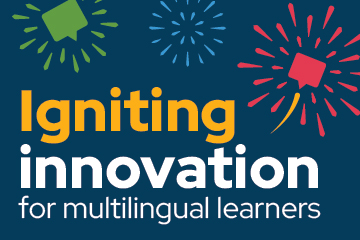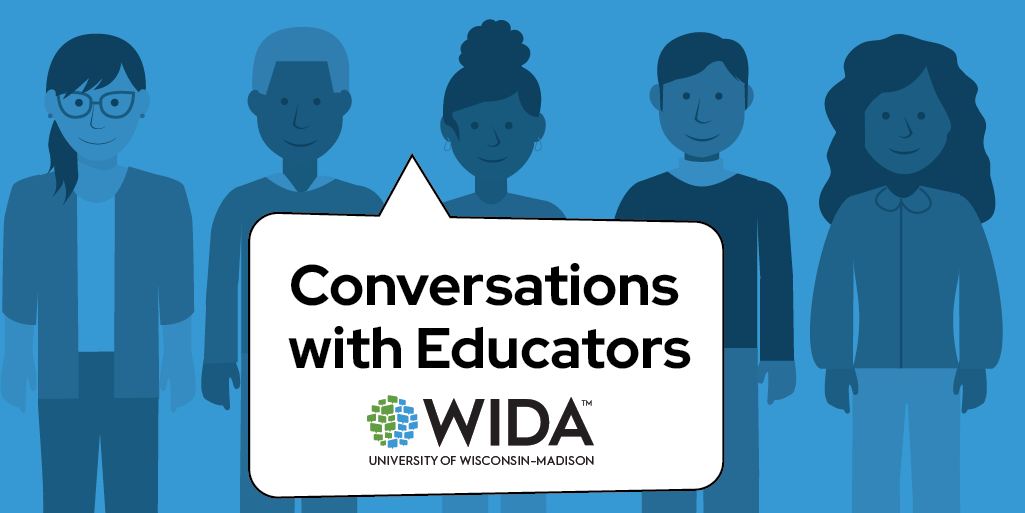Resources/Recursos
Featured Resources



All resources/Todos los recursos
Filter resources by:
Resources/Recursos
Folleto de la prueba Alternate ACCESS para padres
Alternate ACCESS es una evaluación de dominio del idioma inglés para los estudiantes en los grados 1-12. La prueba se administra todos los años para ayudar a los distritos escolares a monitorear el desarrollo del idioma inglés de los estudiantes identificados como estudiantes del idioma inglés que tienen discapacidades cognitivas significativas.
Detalles del recurso Ver Descargar ahoraReleased December 2015
Students with Limited or Interrupted Formal Education (SLIFE)
This WIDA Focus Bulletin focuses on the needs of students who have limited or interrupted formal education (SLIFE). Because the vast majority of students in this group are enrolled in grades 6 through 12, we will focus on those grade levels. However, many of the tips and suggestions can be applied in lower grade levels as well. Throughout the bulletin we will explore academic and social-emotional factors that may affect this group of students, examine the benefits of building community partnerships, address how to assess student readiness levels, and offer a checklist of considerations for instructional planning.
Published May 2015
Authors: Lauren Keppler, Lucia Morales, Julia Cortada, Maria Austin
Released June 2015
Academic Vocabulary Development
WIDA Video Contest Winner
Andy Mizell plans engaging instruction that scaffolds learning for the wide range of English proficiency levels in his middle school ELL class. He begins by assessing his students and collaborating with other teachers to extend his academic language instruction across subject areas.
Resource DetailsReleased June 2015
Evaluating Teacher Effectiveness Using ACCESS for ELLs
Regardless of the growth model, aggregate test-score-based models of student growth require large and longitudinally connected samples of student data. When sample sizes are small it becomes impossible to reliably estimate and disentangle district, school and teacher effects from student growth data.
Published June 2015
Author: Narek Sahakyan
Released June 2015
Examining Relationships Between Alternate Access and State Alternate Assessments
This report examines how Alternate ACCESS for ELLs serves as a tool that identifies English proficiency attainment for English learners with significant cognitive disabilities.
Published December 2014
Author: H. Gary Cook
Released December 2014
Examining District-Level Growth Using ACCESS for ELLs
This research report provides a description of a study examining school districts in the WIDA Consortium whose English language learners (ELLs) exhibit consistently high growth on the ACCESS for ELLs (ACCESS) assessment.
Published August 2014
Authors: Narek Sahakyan, H. Gary Cook
Released August 2014
Collaborative Learning for English Language Learners
This research brief reports preliminary results from a study of teachers’ successful experiences engaging ELLs in collaborative learning with peers.
Published May 2014
Resource Details View Download NowReleased May 2014
Response to Instruction and Intervention for English Language Learners
Developing a Culturally and Linguistically Responsive Approach to Response to Instruction and Intervention (RtI²) for English Language Learners: Connecting to WIDA Standards, Assessments, and Other Resources
Response to Intervention or Responsiveness to Instruction (RtI) is one example of a multi-tiered system of support that helps educators identify the needs of all students as they develop more culturally and linguistically responsive educational systems. This guide includes tools and resources to help states, districts and schools address some of the unique needs of ELLs within a culturally and linguistically responsive RtI² system.
Resource Details View Download NowReleased March 2014
Implementation of the English Language Proficiency Standards Across the WIDA Consortium
This paper finds that many educators see the WIDA English language proficiency standards as a tool that can guide them in differentiating instruction and supporting language development among English language learners.
Resource DetailsReleased November 2013
English Language Arts
The purpose of this WIDA Focus Bulletin is to provide guidance to teachers of English language arts (ELA) who are implementing the Common Core State Standards (CCSS) and working to respond to the specific needs of ELLs. In their treatment of academic language (or the language of school), the CCSS represent a departure from existing content standards.
Published November 2013
Authors: Daniella Molle, Mariana Castro, Julia Cortada, Leslie Grimm
Released November 2013
Tool to Evaluate Language Complexity of Test Items
This paper focuses on the creation of an instructional hyper textbook that serves as a personal environment for learning a less-commonly-taught language, Turkish in this case. It shows how digital personal environments can advance self-regulated language learning in tandem with more formal learning strategies.
Resource DetailsReleased July 2013
Implementation of the English Language Proficiency Standards Across the WIDA Consortium
This study examined the ways in which educators across the WIDA Consortium use WIDA’s English language proficiency standards, and in particular the model performance indicators (MPIs).
Published May 2013
Author: Daniella Molle
Released May 2013
District Readiness to Implement Standards-Based Reform for English Language Learners a Decade After No Child Left Behind Act
This 16-state survey of school districts with fewer than 500 English language learners revealed that few district-level English language learner staff had formal preparation in educating English language learner or using English language proficiency standards. A wide school-level disparity existed between English as a second language or bilingual teachers and general education teachers in terms of their engagement with proficiency standards and assessment data.
Resource DetailsReleased April 2012
English Language Proficiency Standards Grade 6 Through Grade 12, 2007 Edition
The 2007 ELP Standards for grades 6-12 reflected the social and academic dimensions of acquiring a second language that were expected of ELLs in grades 6-12 attending schools in the United States. Each ELP standard addressed a specific context for English language development.
Resource Details View Download NowReleased July 2009
English Language Proficiency Standards PreKindergarten Through Grade 5, 2007 Edition
The 2007 ELP Standards for grades PreK-5 reflected the social and academic dimensions of acquiring a second language that were expected of ELLs in grades PreK-5 attending schools in the United States. Each ELP standard addressed a specific context for English language development.
Resource Details View Download NowReleased July 2009




